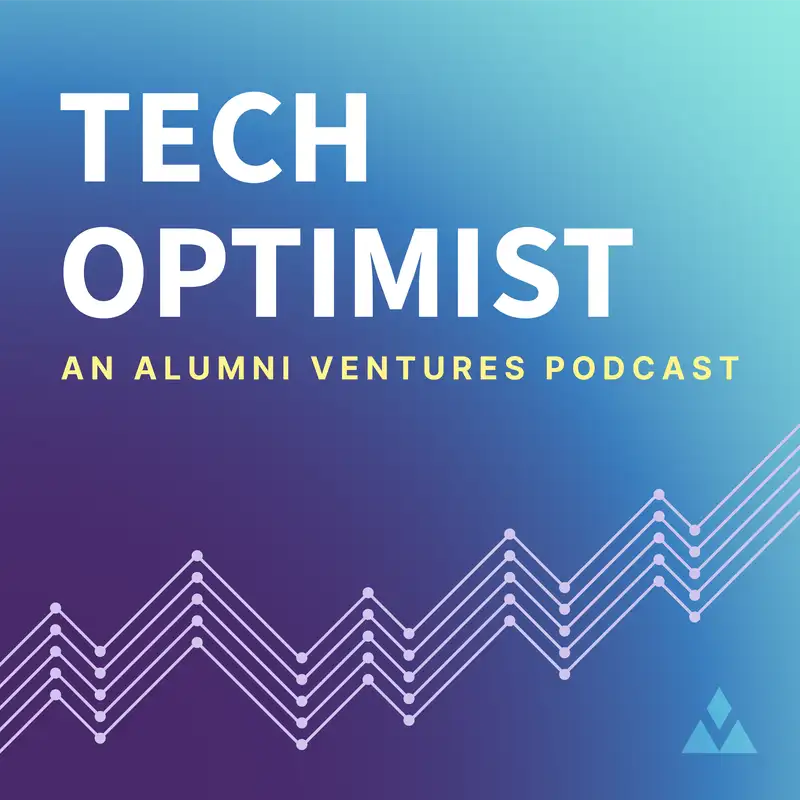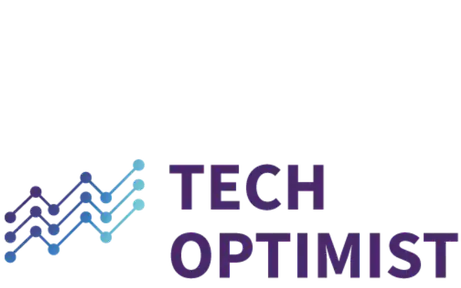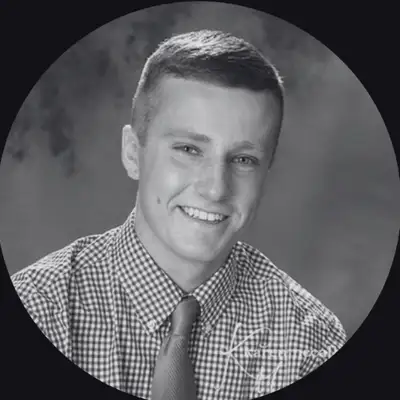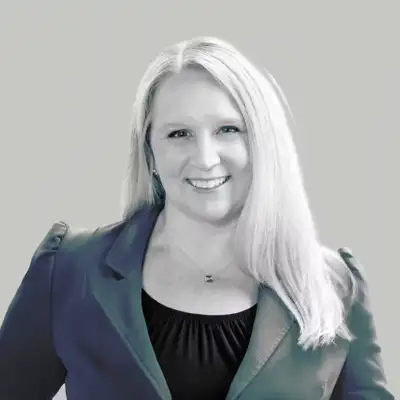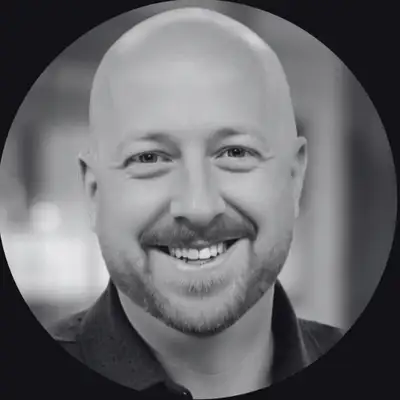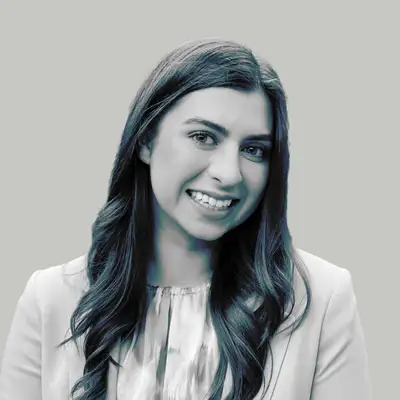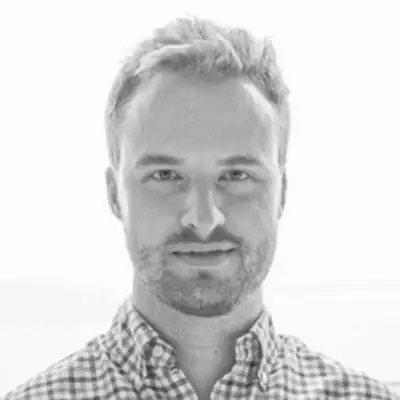#54 - Meet the Startup Reimagining Death for a Sustainable Future
Sam Herrick:
Don't have any end-of-life plans? This company has a cool way to help you finish them.
Tom Harries:
What we're doing at a high level is we are gently transforming bodies into nutrient-rich soil. The science behind what we're doing is as old as any living organism adds up pretty much. So this is exactly what would happen to a body if it were just left on the forest floor.
Drew Wandzilak:
In a very, what seems like maybe an advanced technology, but to your point, I mean, it really is almost as non-technology as you could get at a core essence. We talked about earlier, it's a new concept, but it's actually one of the oldest concepts that we have.
Sam Herrick:
Hi, welcome back to this episode of the Tech Optimist. Today, we have a Meet the Startup episode for you, and today we meet the company Earth. Now, the AV internal member who's going to be our guide for today is Drew Wandzilak, senior associate here at AV. Then our guest today is Tom Harries, Co-founder and CEO of said company Earth.
Now by now, if you've listened to this show enough times you know my voice. My name is Sam Herrick and I am the guide and sort of tech note writer for the show. Now, let's get into the company that we're going to meet today. The company Earth takes a new modern and innovative approach to end-of-life preparations. They essentially provide a more modern method to cremation. Now, I'm not going to spoil how they do it yet because the technology is really cool and very innovative and we go into it pretty deeply further down in the episode, but they really help the body and soul kind of connect back to the earth and back to its roots.
Drew and Tom talk a lot about Tom's background and Drew brings up some really good points about legislation and red tape and how to get this concept spread out more. They have a lot of really good information on how this is a very green, very carbon neutral alternative to cremation and other things like that. Again, I'm not going to spoil the rest of the episode. I'm going to let you here for yourself, so here we go. Let's go. Welcome to the episode.
As a reminder, the Tech Optimist podcast is for the informational purposes only. It's not personalized advice and it's not an offer to buy or sell securities. For additional important details, please see the text description accompanying this episode.
Drew Wandzilak:
Well, I hope so too. Fantastic. Okay, I'm Drew Wandzilak. I'm an investor here with Alumni Ventures, and with me today is Tom Harries at Earth. Tom, thank you so much for joining us today.
Tom Harries:
Thank you for having me.
Drew Wandzilak:
Well, let's start off with a little bit on your background and Earth. What do you guys do and what got you there?
Tom Harries:
Yeah, my background is somewhat unusual, but would say highly relevant to what we do. Spent the past 10 years in the funeral industry, which not many people can say, and have started three companies in the space now. Had an online arbitrary website in the UK a decade ago, then moved to the US in 2017 to start a direct consumer cremation company, which we brought into the largest online cremation provider in the United States. Then for the past four or five years have been working on Earth, and Earth is by far the most exciting company of the three. What we're doing at a high level is we are gently transforming bodies into nutrient-rich soil as an environmentally-friendly alternative to burial and cremation. We work direct to consumer families. We're a licensed funeral establishment, so people can either make arrangements at time of need, so death has occurred. We can plan and prepay for the future, which is also very popular with the families we work with.
Sam Herrick:
Okay, so you guys know me. I did a dive on Earth Funeral's website for you so you don't have to, but again, their graphics and their art and photography on their website is beautiful. If you ever feel like seeing some really good graphic design and a really nice, concise, organized website, definitely check them out. Their website is earthfuneral.com. They too spent the time and got the creative freedom to produce a video for their overview of their company and how their process works. I'm going to play that here in a second. First, I want to read something on their website. It is on their homepage and just the top line says, "What is soil transformation? Soil transformation is a natural environmentally-friendly alternative to burial and cremation, which is sometimes referred to as human composting. Over a 45 day process, a body is gently transformed into a cubic yard of nutrient-rich soil. Families choose how much soil they would like to be returned to scatter or plant, how the remainder is donated to local conservation projects for land restoration initiatives."
"Soil transformation is for nature lovers, conservationists, and for those of us who want to protect the planet for future generations. Whether you need our services now or your planning for the future, Earth promises a sustainable process, transparent prices, and 24/7 best-in-class care." I mean, what a fantastically written elevator pitch, so there was that. I'm going to play Earth's video right now. It's from their internal team. It's really nicely produced, really nicely written. The footage is also beautiful. I'm going to play that now. Then after that we're going to get into our first ad and then we've got a really good interview plan for you today. We've got a lengthy one. There's a lot of really good conversation in here that I'm super excited to share with everyone. Here's the things that I just said, and then we'll hop back into the rest of the interview, so enjoy.
Carolyn Maezes:
We believe the funeral industry needs a major revamp. Traditional funeral practice is unsustainable and the process of making a funeral arrangement is a highly antiquated customer experience. This is why we started Earth. We're a team of funeral professionals, scientists and software engineers. We have a completely different approach to the traditional funeral industry. For the past two years, we've been developing an environmentally-friendly alternative to burial and cremation. We call this process soil transformation.
Over 30 days, we gently transform a body into nutrient-rich soil. Families choose how much soil they'd like returned to scatter or plant, and the remaining soil is sent to conservation land that we acquire to restore and protect for future generations. The process is natural, carbon neutral and takes place in our state-of-the-art, soil transformation facilities. Whether you need our services now, imminently or you're planning for the future, we're here to help. We've built an industry-leading online experience for your convenience. Make arrangements and sign legal documents online, receive real-time status updates each step of the way, and create beautiful obituaries to share with family and friends. If you need any help at all, we're just a phone call away. 24 hours a day, seven days a week. Learn more at earthfuneral.com.
Pete Mathias:
Hey everyone, just taking a quick break so we can tell you about the US Strategic Tech Fund from Alumni Ventures. AV is one of the only VC firms-focused on making venture capital accessible to individual investors like you. In fact, AV is one of the most active and best-performing VCs in the US. We co-invest alongside renowned lead investors. With AV's US Strategic Tech Fund, you'd have access to an investment portfolio focused on technologies that are critical to bolstering US national security and economic prosperity. We prioritize three key areas, Homeland Security, Cyber AI and digital strategy and space innovation. By investing in companies innovating in these areas, you can support early-stage ventures and help encourage sustained growth and technological in the United States. If you're interested in learning more, visit av.vc/funds/strategic tech.
Drew Wandzilak:
There's a lot to dig into there and what you guys are doing. We're obviously incredibly excited about, but you touched on it. Your background is a little bit unique but perfectly crafted for this business. I'm curious, is this a personal calling for you? Is it like an obsession? I mean, what about kind of this market and death care and end-of-life has really touched you in a way that you've started multiple companies in different areas of this market?
Tom Harries:
Yeah, I mean, I ultimately fell into the space, I use that word intentionally, but fell into the space after the death of a grandparent and had no family connection to the industry. Had no thoughts that when I entered college in the UK I'd leave having started a first-year company and spend my subsequent career in the space, but initially exposed to the death of a grandparent and observing in the industry that I just never really thought of before. Actually, I think most people try to actively not think about and then also how antiquated it was, so intellectually got me interested in the space.
Then just the more time you spend in it, the more you understand about it, you sort of understand where the opportunities lie, that sort of thing. Then the whole composting side. The colloquialism, what we're doing is body composting. Came around from just watching trends in the industry and this one really catching my eye because it resonated with me personally. The idea of being gently transformed into design and returning nature versus being cremated appealed to me and generally, have the opinion that if one person likes something, unless you're truly bizarre, maybe I am, a lot of other people will like it too. That was an underlying thesis and it's sort of played out so far.
Drew Wandzilak:
Yeah, and I think that's powerful. I mean, it is a space that isn't necessarily talked about too much and sometimes for good reason, sometimes for not as good reason. People have seen alternative end-of-life options, I think, pop up in the last decade or so. You touched on why this resonated with you. Maybe just talk a little bit when you talk with customers or other people about this process, what about this is this kind of return to earth, the human composting element, what resonates with people maybe compared to other alternatives beyond just cremation or in-ground burials?
Tom Harries:
Yeah, I think that the starting point here is this industry has had a lot of change over the past 20 years, and the biggest trend has been the rise in cremation. Cremation in the nineties was about 20% of all deaths, by 2035, it's expected to be 80%. That does not take into consideration new processes like ours. Cremation as a baseline is just not that appealing for a lot of people. It's a fossil fuel-driven process that [inaudible 00:12:20] emits CO2, emits mercury and other toxic gases as well. It's also functional and it does what you want it to do, but it's just not a nice process.
You then had some alternatives, but they've never really taken off and that's because they're hard to access as in they're not mainstream, so they're not reachable for most people. The second is they're impractical. An example is you can just bury a body in the ground, but actually do we have the land availability to put 330 million bodies into the ground over the next 80 years? Probably not. Then also, trying to dig into the ground in the middle of the summer when the ground is hard as rocks is really challenging. Trying to dig into the ground of the winter where the ground's hard rocks is really challenging. None of these other alternatives have really taken off because they're just not practical and they're just not widely available to people.
Drew Wandzilak:
Talk to us about the process maybe in a little bit more depth. People that are considering this or just learning about this process for the first time here. What does it look like? What's kind of that experience end-to-end?
Tom Harries:
Yeah, so we are accelerating what is a completely natural process. Whilst this gets labeled as a new process and the science behind what we're doing is as old as any living organism, as of pretty much. This is exactly what would happen to a body if it were just left on the forest floor. What we're doing is accelerating that process through science and technology. The science is composting to balance in carbon and nitrogen. Carbon comes from premium natural material as we use organic mulch, wood chip, wildflower, the nitrogen comes from the body itself. Then we're optimizing conditions to create perfect conditions for microbes to break the body down at [inaudible 00:14:13]. That is temperature, that's oxygen, that's moisture, and this is all a proprietary process to earth then.
We have developed a vessel in which the process takes place is the vessel that is controlling and optimizing these conditions and highly automated at this point too, which is exciting because this is ultimately a climate play. Climate play's only impactful if you can do them at scale, and that's the role of science and technology, and R&D for us is making this as widely available as possible over the next five, 10 years.
Drew Wandzilak:
I think that's the beauty of what you guys are doing is the process is done, I think, in a very elegant way, but what seems like maybe an advanced technology, but to your point, I mean, it really is almost as non-technology as you could get at a core essence. When the process is done, you have this soil, this dirt, what happens then? Just walk through that chain of custody or that process once you get to that-
Tom Harries:
Yeah, I think this is the really neat part of what we do. It is nutrient-rich soil. There's going to be about 300 pounds left after the process, that's going to be too much for most people to take home. You have a choice what you do at the soil, you can keep all of it, should you wish. You can take portions of it, should you wish. You can also donate all of it. If you keep it or take soil back, you can keep it, you can scatter it, you can plant it. You do stuff that's meaningful to you and your family with the soil. We've had people plant memorial gardens. We've had people go on road trips and scatter in several different places that they visited with their lost loved one, that sort of thing. Then any remaining soil's sent to conservation projects.
We have a conservation project in Washington, which is our reforestation projects. We have a conservation project in California, which is a land restoration project. It was a piece of land that was formerly agriculture and is now being returned or restored to a native oak savanna ecosystem. This is the really cool part then is we're giving back to nature. We're being returned to nature, we're restoring and protecting the planet for future generations, and that is what resonates with people. It's a gentle natural process. It's better for the environment and it offers this return to nature.
Drew Wandzilak:
Maybe this is too harsh of a word, but it's functional and there's power in that and there's, I'll use the term, the word beauty in it again. Before I met you and learned more about the company, I mean, one of the stories I remember was a woman who had a similar process with her late husband and used that soil and her garden and they used to garden all the time. There's meaning to it and there's functionality. I mean, it seems like a harsh word to use because I think this is a very emotional thing, but there's something beautiful in that you don't necessarily get from existing [inaudible 00:17:34].
Tom Harries:
I think it's function with beauty, but the output is something that's useful. Cremation produces via a polluted process and inert material, whereas we're producing a nutrient-rich soil that can be used for creating new life. It's very circular [inaudible 00:17:51].
Drew Wandzilak:
It very much is.
Sam Herrick:
Okay, I want to take a few minutes here to really talk about and dissect. There's soil transformation process. Again, this is all on their website, but I'm going to throw up a visual right now of me going through the website, kind of just reading their process and how this really cool process works. Earth use is the principles of nature to transform bodies into nutrient-rich soil. Through our proprietary vessel technology, we're able to recreate conditions found in the natural world. This is achieved through carefully balancing carbon, nitrogen, oxygen and water, and optimizing temperature and moisture levels, which Tom kind of touched on a little bit earlier. This, in turn, creates the perfect conditions for naturally occurring microbes to break the body down to a molecular level. What he was talking about, sort of speeding up this process. Reaching temperatures in excess of 131 degrees Fahrenheit, the heat ensures that any harmful pathogens are killed and the soil is tested after each process to ensure that it's safe for humans, plants and wildlife alike.
The soil transformation process returns the nutrients in our bodies to the natural world. Healthy soil is paramount to a healthy ecosystem. It filters water, provides nutrients to plants and animals, sequesters carbon and helps regulate global temperatures. Local sustainably-sourced materials, pretty much how they sort of get this vessel started. To achieve the correct balance of carbon and nitrogen, we use a proprietary combination of locally sourced organic materials. These are naturally carbon or nitrogen dense. They've got organic mulch, wood chip and wildflowers and a little bit more into the process. Step one, preparation. This takes about 30 minutes and prior to being placed in the soil transformation vessel, the body is gently washed and wrapped in a biodegradable shroud. Then step two, which is the vessel, this also takes about 30 minutes. The shroud is placed in its individual vessel on a layer of organic mulch and wood chip, wildflowers are added with the shroud.
I think that would just be super beautiful as well too. That visual of just being literally laid back into Earth is really, really awesome. Step three, soil transformation. Now, this is the big process that takes about 45 days, right? The body and organic material remain in the vessel for 45 days. Microbes break everything down on the molecular level, producing a nutrient-rich soil. Then step four, the final step, the soil. Each process produces an approximate cubic yard of soil. Once completed, it can be used to restore forests, preserve conservation land, and nourish gardens and combat erosion.
Drew Wandzilak:
Maybe let's take a step back here. I think learning about the process is great. People are hearing this and going, "Okay, this resonates with me, or I want to learn more."
Tom Harries:
Exactly.
Drew Wandzilak:
Hopefully, right? Where are you guys operating now? How do people get engaged, learn more? Who should be on the lookout for information about Earth on the airwaves or on their television screens?
Tom Harries:
Yeah, so we are four or five years in at this point. We are the leading provider of this process in the United States. We operate two facilities, one in Washington state, one in Nevada state. From these locations, we serve pretty much the entirety of the West Coast and the Pacific Southwest. Our goal is to start expanding next year. The next three years, we want to make this process available to 80% of the US population and you find everything you need to know on our website. One of the other big things we've done is really innovate around consumer experience, not just within our part of the funeral industry, but the funeral industry generally. We're creating a lot of consumer tech to make it as easy as possible to make and manage these arrangements. We're sort of solving on two levels. One, we're trying to create a solution that is better for the environment and resonates more deeply with people. Then we're trying to create the absolute easiest way to access and manage this as a process too.
Drew Wandzilak:
I think as you guys expand, there is a little bit, this is a relatively new concept and we talked about earlier, it's a new concept, but it's actually one of the oldest concepts that we have on earth, but there is some regulatory, some policy elements to this. How are you guys coming up against that? What are those kind of conversations in those responses like? Is this available everywhere and if not, when will it be?
Tom Harries:
Yeah, this was the biggest risk we took back in 2020 was when we started this company, it was legal in Washington state only. They passed a bill in 2019. The bill came into effect in 2020, but fast forward four years now, and this is now legal in 12 states and relevantly, it's becoming very regional. You've got states in the Northeast other parts of the US, you've got states on the East Coast parts of the US, you've got states in the Midwest, West Coast, Pacific Northwest, Pacific Southwest, et cetera. It has gone from something that was available in one state four years ago to, although, there might not be facilities there just yet, getting legalized in an increased number of states. This is really grassroots-driven, by the way. This is the exciting thing is this is not passing controversial legislation. This is pretty politics neutral. Yeah, we got it up to 12 states and we will continue pushing to legalize in more states as well.
Drew Wandzilak:
Why do you think it's taken so long to adopt? Again, it's like, I think one of our first conversations, you mentioned this regulatory piece and there is, there's this grassroots element and people are getting on board and it's politically neutral. There was a moment when I stood back and I'm like, "This is literally back to our roots." Apologies for the pun, but it's like why is there almost, why was there so much red tape around this?
Tom Harries:
I don't think that red tape is a bad thing. I think regulation can serve important roles in sensitive industries, and I think that's what regulation does in the funeral space. It is not been easy to get stuff updated, but ultimately, this stuff is there to protect consumers. Yeah, that might not be the answer you're expecting, but regulation done well serves a purpose, and we're just trying to get regulation updated to reflect 21st century preferences.
Drew Wandzilak:
I do my best to be a good interviewer, Tom, and I don't have any expectations for answers you may give. I try to keep an open mind.
Sam Herrick:
Okay, last ad and then we're going to round off the interview. Hang tight.
Speaker 7:
Do you have a venture capital portfolio of cutting edge startups? Without one, you could be missing out on enormous value creation and a more diversified personal portfolio. Alumni Ventures, ranked a top 20 VC firm by CB Insights, is the leading VC firm for individual investors. Believe in investing in innovation, visit AV.VC/foundation to get started.
Drew Wandzilak:
You mentioned, I'm noticing the trends in the industry and no doubt it is a massive industry, funeral services, an industry that pretty intimately, and it is something that's very personal for a lot of people. I mean, how are you working with the existing funeral homes, funeral service providers, the existing regional or very local, potentially mom and pop or whatever it may be? What does that interaction look like and how are you building your business with that support?
Tom Harries:
That's the nice part about this process then is this is simply a swap out to cremation. Choosing this does not mean you have to compromise on any funeral ritual that you've historically done or might want to do in the future. You can still make [inaudible 00:26:53], you can still have viewings, you can still have services, you can still have catering, you can still have permanent memorialization, that sort of thing. We are simply providing a nicer alternative to cremation, and this means that funeral homes are part of rite as well. We are not cutting funeral homes out of being able to offer this. We work with funeral homes so that they are able to offer this to them families too. Funeral homes play a really important role in the ritualization side of things. As I say, we're not trying to replace or forget past tradition. We're simply trying to provide a nice alternative to the cremation side of things.
Drew Wandzilak:
That's fantastic. We'll jump, again, I hope we're getting people interested enough to at least keep listening, but also check out the website. You guys are known for, I think, just how great your website and the process is for people should they want to go through this pricing and we don't have to necessarily get to the cent and because I think you have a great process for figuring that out. Maybe just comparatively, because I think it is one, how are people thinking about pricing, right? This is a big decision. It's probably one of the, I think you've mentioned at one point, of the last decisions you may make or not, but there's more to this than just buying a car, right? How do you think about pricing? How does it compare for people compared to other options? Just a little bit more on that.
Tom Harries:
Yeah, I think people are surprised by how affordable we are, and part of that is traditional funerals are expensive. The National Funeral Director Association, average funeral costs blended across cremation and burial think is about $8,000 we are at about a $5,000 price point. Compared to the traditional average, we are very affordable and longer term, there's hopefully a one in which we can bring costs down as well as this becomes more normalized and accessible as a technology, but as it stands, comparatively very affordable to what else is on the market.
Drew Wandzilak:
Yeah, I think incredibly helpful and surprising for how much is involved in the process that you guys have created, that you can do it in a way that is so cost competitive for people and it's a big part of people's decisions. I think that's great. Well, appreciate you jumping on with us, Tom. Anything that you'd like to leave the community with before we jump off?
Tom Harries:
I think spread the message. This for us, is ultimately a consumer awareness at play. We believe that 100% of people know about this, a very large number of people are going to resonate with it and want to choose it for themselves or loved ones. The name of the game is awareness. Shout this far and wide if you think this is interesting.
Drew Wandzilak:
Awesome. Thanks so much, Tom.
Tom Harries:
Yes.
Sam Herrick:
Thanks, again, for tuning into the Tech Optimist. If you enjoyed this episode, we'd really appreciate it if you'd give us a rating on whichever podcast app you're using and remember to subscribe to Keep up with each episode. The Tech Optimist welcomes any questions, comments, or segment suggestions, so please email us at info at techoptimist.vc with any of those and be sure to visit our website at av.vc. As always, keep building.
